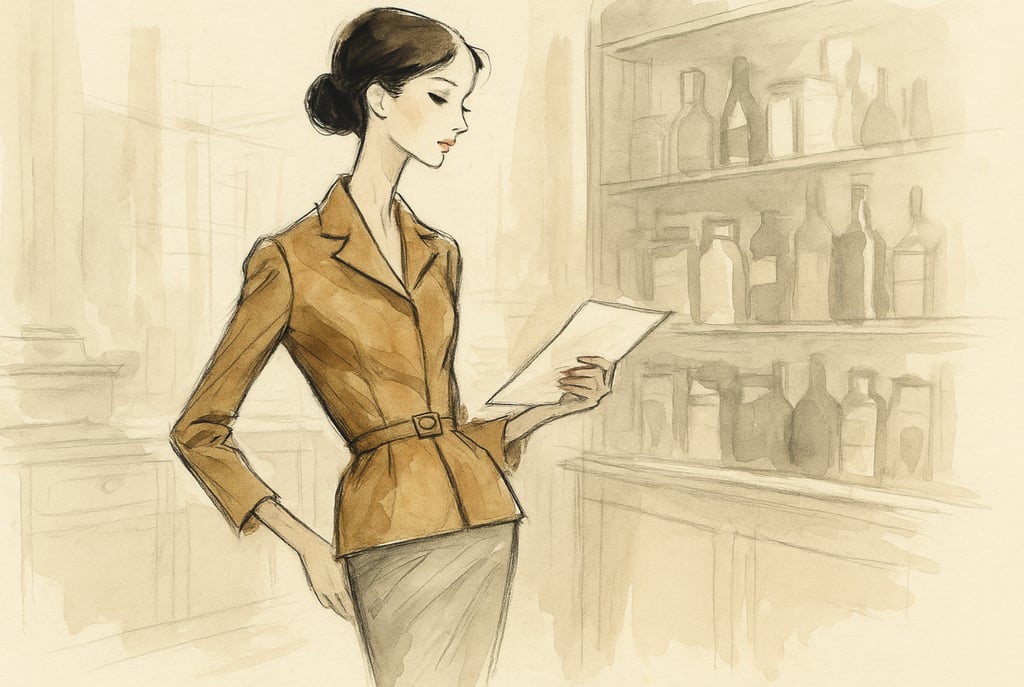The Politics of the Grocery List: How Ration-Era Shopping Became an Act of Resistance
During WWII rationing, grocery lists became more than reminders—they hid codes, forged requests, and resistance messages, turning shopping into quiet rebellion.
FOOD HISTORY & TRADITIONS


A grocery list might seem like the most mundane of objects—scribbled reminders for bread, milk, and tea. But during the rationing years of World War II, across Europe and beyond, those scraps of paper could carry far more than reminders. They could become acts of quiet defiance, lifelines for families, and even tools of resistance against occupying forces.
Rationing transformed food shopping from a daily routine into a tightly controlled system. Coupons dictated what and how much a household could buy, and shops were forbidden to sell rationed goods without the proper vouchers. But where rules grow rigid, people find ways to bend them. From mothers stretching meals for their children to underground resistance groups supporting fighters, the grocery list became a surprising site of subversion.
Ration Books, Rules, and Black Markets
During the war, rationing ensured that limited supplies of essentials like sugar, butter, meat, and tea were distributed fairly. Every citizen received a ration book filled with coupons, which they had to present to buy controlled items. Without the right stamps, shops risked severe penalties for making a sale.
While rationing was designed for fairness, it often left families hungry and frustrated. Shortages, combined with the monotony of government-approved diets, created fertile ground for black markets. Smugglers, sympathetic shopkeepers, and underground networks found ways to provide “extras” to those who could pay—or those who needed it most.
And at the heart of these quiet exchanges was the humble shopping list. Far from a simple reminder, it became a coded ledger, recording not just food requests but sometimes clandestine arrangements that had little to do with groceries at all.
Forged and Coded Lists: Everyday Resistance
Many ration-era shopping lists concealed codes and forgeries, designed to protect buyers, sellers, and the networks in between. To avoid drawing suspicion, ordinary items were given double meanings. A note reading “Tea for Aunt May” might actually indicate a request for contraband sugar. A sketch of a fish could signal the need for extra protein—perhaps fresh meat or eggs acquired outside the ration system.
For those linked to resistance movements, the grocery list’s role grew even bolder. Some lists doubled as dead drops, hiding messages about meeting points, safe houses, or supply runs among everyday items. Invisible ink, lemon juice, or specially folded notes made these messages nearly undetectable until revealed with heat or light.
The beauty of this system was its banality. A folded note or torn scrap tucked into a pocket was far less suspicious than a letter or official document. Even if inspected, the list looked like any other ration-era shopping reminder—mundane, unremarkable, and easily overlooked.
The Risk Behind the Paper
These quiet acts of subversion were not without danger. Being caught with a forged or coded list could carry serious consequences: hefty fines, confiscation of goods, imprisonment, or even charges of collaboration with resistance groups, punishable by death in occupied territories.
Yet for many, taking the risk felt like necessity, not rebellion. Mothers forged lists to secure enough calories for their children. Farmers bartered surplus goods off the books to keep neighbours alive. Resistance couriers carried coded shopping notes to mask critical plans. In each case, the grocery list became a tool of survival and defiance, challenging systems that sought to control every bite of food and every transaction.
Fun Fact: Grocery Lists as Spy Tools
Some surviving ration-era lists, now preserved in archives and museums, reveal layers of hidden writing that can only be seen under specific conditions. Messages written in lemon juice would remain invisible until held over a flame. Others used pinprick codes or folded corners to convey secondary messages without ink. To the untrained eye, these were just reminders for “bread, milk, and potatoes”—but to those in the know, they were as valuable as any coded telegram.
What the Grocery List Tells Us About Wartime Life
The politicised grocery list highlights a key truth about life during wartime: resistance wasn’t always loud or violent. Sometimes, it was as small as a handwritten note—a scrap of paper that, in its own way, pushed back against deprivation and control.
It also reflects how deeply rationing reshaped daily life. Food, something so ordinary, became a flashpoint for ingenuity, community, and defiance. The grocery list, usually thrown away after a shop, became a record of risk, resourcefulness, and survival.
Today, these surviving lists—faded, coded, and sometimes singed from the flames used to reveal their secrets—remind us that rebellion can live in the quietest places. They speak to the creativity of those who refused to let hunger or oppression erase their agency, even if all they had was a stub of pencil and a scrap of paper.
